A Realistic, Low-Cost Simulated Automated Chest Compression Device
- PMID: 38707939
- PMCID: PMC11068316
- DOI: 10.21980/J8M63C
A Realistic, Low-Cost Simulated Automated Chest Compression Device
Abstract
Audience: This simulated automated chest compression device was designed for use in simulation cardiac arrest cases involving emergency medicine residents, but it would be applicable to other learners such as nurses, pharmacists, and medical students.
Background: Automated chest compression devices (ACCD) are commonly utilized in cardiac arrest in the emergency department and by emergency medical services (EMS) as patients arrive in the ED.1 Prolonged simulated cardiac arrest can be challenging to maintain proper chest compression depth and technique.2 Resident learning may be enhanced during cardiac arrest in the simulation environment by implementing the use of a simulated ACCD.
Educational objectives: By the end of this educational session using a resuscitation trainer or high-fidelity manikin, learners should be able to:Recognize appropriate application of simulated ACCD to an ongoing resuscitation caseDemonstrate proper positioning of simulated ACCD in manikin modelIntegrate simulated ACCD to provide compressions appropriately throughout cardiac arrest scenario.
Educational methods: We developed a cost-effective simulated ACCD for use in resuscitation simulation cases. An initial pilot session identified components of fidelity that were used to model the simulated ACCD after those utilized in clinical situations. Three simulated devices were created and then tested for efficacy during high-fidelity simulation with 25 emergency medicine residents.
Research methods: Visual analog scales were used to explore how the simulated ACCD affected perceived realism and stress level during the cardiac arrest simulation. Qualitative data were collected through open-ended learner feedback comments. The institutional review board at our institution reviewed this project and determined that it was exempt.
Results: With inclusion of the simulated ACCD device, learners rated the simulation "more realistic" with an average rating of 74/100 and "less stressful" with an average rating of 69/100 on the visual analog scales. Learner comments noted that the use of the ACCD in simulation resulted in better resource availability and accurate environmental noise.
Discussion: The simulated ACCD presented here was found to be effective, realistic, and practical for use by learners in a resuscitation curriculum. Our results suggest that implementating a cost-effective simulated ACCD ($98 for supplies) in high-fidelity simulation cardiac arrest cases enhances the perceived realism of the environment and offers physician learners a low-stress opportunity to practice the clinical application of ACCD in cardiac arrest resuscitation. Additionally, the use of the simulated ACCD, specifically in a prolonged resuscitation, eliminated the need for physically demanding manual chest compressions. Anecdotally, in simulated environments we have observed poor-quality manual chest compressions due to an understanding that the manikin is "not real," leading to decreased psychological fidelity from the shared acceptance of the poor-quality compressions. Thus, the presence of a simulated clinical device providing chest compressions could have increased the feel of realism through improved psychological fidelity. Additionally, we note that the physical and psychological fidelity of this simulated device was sufficient for physicians to perceive clinical implementation, but may be suboptimal for assistive staff, who are focused on the specific functionality and may benefit from training on the physical device in clinical use. Finally, our simulated ACCD resembles the clinical device our department uses; we advise modifications as appropriate to allow a simulated ACCD created for other learners to also resemble their clinically used ACCD.
Topics: Automated chest compression device, ACLS, improvised equipment, high fidelity simulation.
© 2024 Joyce, et al.
Figures


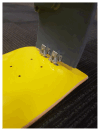
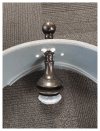
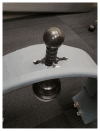
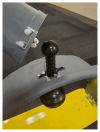

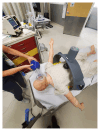
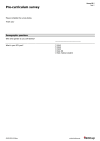
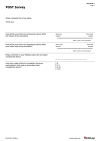
Similar articles
-
Extracorporeal Membrane Oxygenation (ECMO) for Refractory Cardiac Arrest.J Educ Teach Emerg Med. 2020 Oct 15;5(4):S28-S58. doi: 10.21980/J88W69. eCollection 2020 Oct. J Educ Teach Emerg Med. 2020. PMID: 37465336 Free PMC article.
-
An Innovative Inexpensive Portable Pulmonary Edema Intubation Simulator.J Educ Teach Emerg Med. 2020 Apr 15;5(2):I9-I20. doi: 10.21980/J8MM1R. eCollection 2020 Apr. J Educ Teach Emerg Med. 2020. PMID: 37465400 Free PMC article.
-
Little Patients, Big Tasks - A Pediatric Emergency Medicine Escape Room.J Educ Teach Emerg Med. 2023 Oct 31;8(4):SG1-SG19. doi: 10.21980/J89W70. eCollection 2023 Oct. J Educ Teach Emerg Med. 2023. PMID: 37969155 Free PMC article.
-
Mechanical versus manual chest compressions for cardiac arrest.Cochrane Database Syst Rev. 2018 Aug 20;8(8):CD007260. doi: 10.1002/14651858.CD007260.pub4. Cochrane Database Syst Rev. 2018. PMID: 30125048 Free PMC article.
-
[New mechanical methods for cardiopulmonary resuscitation (CPR). Literature study and analysis of effectiveness].Anaesthesist. 1997 Mar;46(3):220-30. doi: 10.1007/s001010050395. Anaesthesist. 1997. PMID: 9163267 Review. German.
